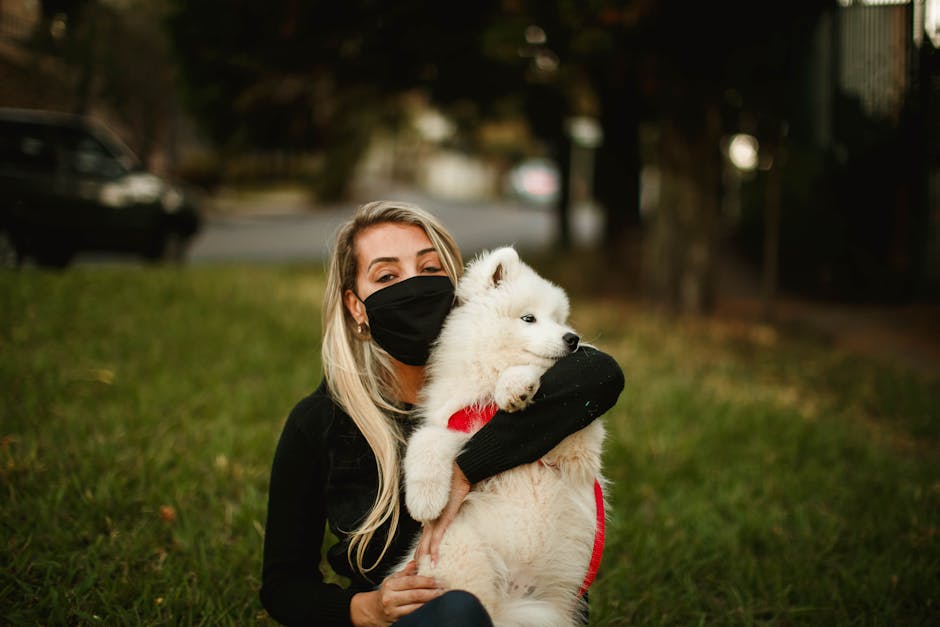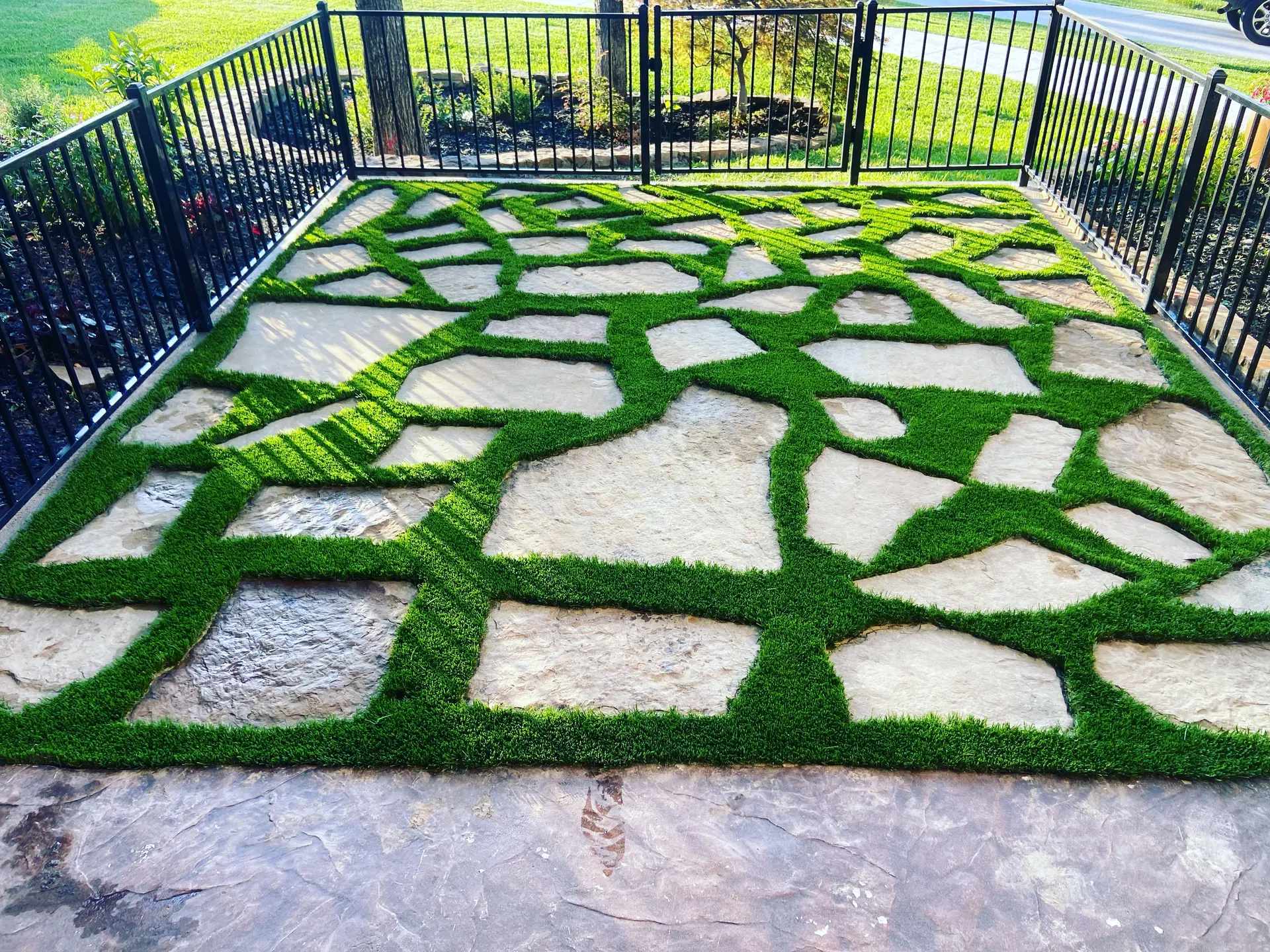
History and Evolution of Synthetic Grass
The history and evolution of synthetic grass provide an important context for understanding its current utility and safety for pets. Initially developed in the 1960s, synthetic grass, commonly known as artificial turf, was designed to solve specific problems in sports facilities. Its first notable installation was at the Houston Astrodome in 1966, where it replaced natural grass that struggled under indoor conditions.
Early versions of artificial grass were made from materials like nylon or polypropylene, which could endure wear and tear but lacked the softness and realistic appearance of natural grass. These early products often faced challenges related to heat retention, abrasiveness, and less-than-optimal aesthetics.
Advancements in technology and materials have significantly improved synthetic turf over the decades. By the 1980s and 1990s, new materials such as polyethylene began to be used, resulting in softer and more durable surfaces. This shift made artificial grass not only more comfortable but also safer for both humans and pets.
The modern era has seen the introduction of infill systems, which include a layer of materials like sand, rubber, or organic substances placed between the synthetic blades. These infill materials help to mimic the resilience and cushioning properties of natural soil, reducing the risk of injuries and providing better traction.
Key advancements in synthetic grass:
- Infill systems: These contribute to better shock absorption and overall comfort.
- Yarn development: Synthetic fibers are now more realistic in texture and appearance.
- UV stabilization: Ensures the turf’s color remains vibrant even after prolonged exposure to sunlight, increasing its durability.
Another significant evolution in synthetic grass is the emphasis on environmental sustainability. Manufacturers now prioritize recyclable materials and incorporate eco-friendly production methods. Modern synthetic grass options often include features like drainage capabilities to manage pet waste more effectively, reducing odors and hygiene concerns.
Today, synthetic grass is used in a variety of applications beyond sports facilities, including residential lawns, commercial landscapes, and pet-friendly areas. The industry has responded to the specific needs of pet owners by offering products designed to be non-toxic, durable, and easy to clean.
In summary, the history and evolution of synthetic grass reflect continuous improvements aimed at increasing safety, comfort, and sustainability. These advancements make synthetic grass a viable option for pet owners seeking a reliable and pleasant surface for their pets.
Health and Safety Concerns for Pets
Synthetic grass has emerged as a popular alternative to natural grass for pet owners, but with this rise in popularity come concerns regarding the health and safety of pets. It is crucial to understand various aspects to ensure that the synthetic turf chosen is safe for pets.
Potential Chemical Exposure
One of the primary concerns with synthetic grass is the potential exposure to harmful chemicals. Some older types of synthetic turf were found to contain lead, which can be hazardous. However, advancements in manufacturing have led to the production of lead-free synthetic turfs. When selecting synthetic grass, it is important to verify that it is labeled as lead-free and non-toxic.
Heat Retention
Synthetic grass can retain more heat compared to natural grass, posing a risk of overheating, especially in hot climates. This can be uncomfortable and even dangerous for pets. Modern synthetic turfs incorporate advanced infill materials and technologies designed to reduce heat absorption. Cooling infills such as silica sand and coated crumb rubber can help mitigate this issue, making the surface cooler for pets.
Digestive Safety
Pets, particularly dogs, may chew or eat parts of the synthetic grass. It is essential to select products that are manufactured to be pet-safe, free from toxic ingredients, and designed to resist damage from chewing. Additionally, ensuring that the product does not degrade into harmful components when ingested is critical.
Odor Control
One concern for pet owners is the accumulation of odors from pet waste on synthetic grass. Some modern turfs are designed with antimicrobial properties that help control odors and prevent the growth of bacteria. Ensuring proper drainage is another critical factor, as it allows for easier cleaning and reduces the buildup of waste products.
Allergic Reactions
Allergic reactions can occur with synthetic grass, much like they can with natural grass. It is important to choose a hypoallergenic product to reduce the risk of skin irritation for pets. Synthetic turfs made from polyethylene are generally considered to be the most skin-friendly option.
Foot and Joint Health
The comfort and safety of a pet’s feet and joints on synthetic turf are also important considerations. High-quality synthetic grass should have a cushioned backing and soft, flexible fibers to support pets’ paws and joints, especially for older pets or those with arthritis.
Environment for Parasites
Synthetic turfs do not provide a suitable environment for fleas, ticks, and other pests to thrive. The lack of organic material means that there is little for these parasites to live on, making synthetic grass a lower-risk option for pet health in this regard. Regular maintenance and proper installation can further reduce the likelihood of parasite infestations.
Overall, ensuring the health and safety of pets when selecting synthetic grass involves considering multiple factors. Pet owners should be proactive in researching materials, technological enhancements, and product certifications to select the safest and most comfortable option for their pets.
Evaluating Turf Quality and Materials
When evaluating the quality and materials of synthetic grass, it’s crucial to understand the various components that contribute to its performance, durability, and overall safety for pet ownership.
1. Types of Materials Used in Synthetic Grass
Synthetic grass is typically made from three primary materials: polyethylene, polypropylene, and nylon. Each material has its own set of characteristics:
- Polyethylene: Known for its softness, polyethylene is a popular choice for residential lawns and pet areas due to its durability and realistic appearance.
- Polypropylene: While less expensive, polypropylene is generally less durable and tends to wear out faster, making it less ideal for high-traffic areas.
- Nylon: The most durable and resilient of the three, nylon is often used in high-traffic areas and sports fields but can be more abrasive and is typically more expensive.
Understanding these materials can help pet owners make an informed decision that balances cost with longevity and comfort for their pets.
2. Infill Materials
Infill materials are integral to the performance of synthetic turf, providing stability, cushioning, and shock absorption. The most common infill options include:
- Crumb Rubber: Made from recycled tires, crumb rubber is effective in shock absorption but can retain heat, which may be uncomfortable for pets on hot days.
- Silica Sand: A common choice for infill, silica sand provides a firm base and helps to keep the grass blades upright but does not offer much cushioning.
- Organic Infill: Options like cork or coconut fibers are eco-friendly and provide good cushioning without retaining as much heat.
The choice of infill directly impacts the comfort and safety of the synthetic grass for pets, making it a key consideration for pet owners.
3. Safety Standards and Certifications
Several safety standards and certifications ensure the quality and safety of synthetic grass products. Some of the key certifications to look for include:
- ASTM (American Society for Testing and Materials): ASTM standards cover various aspects of synthetic turf, including flammability, durability, and safety.
- ISO (International Organization for Standardization): ISO certification indicates that the manufacturer adheres to international standards in quality management systems.
- LEED (Leadership in Energy and Environmental Design): LEED certification indicates that the product contributes to environmental sustainability.
Choosing synthetic grass that meets these certifications ensures that the product adheres to recognized safety and quality standards, providing peace of mind to pet owners.
| Material | Characteristics |
|---|---|
| Polyethylene | Soft, durable, realistic appearance |
| Polypropylene | Less durable, wears out faster, less ideal for high-traffic areas |
| Nylon | Most durable, resilient, higher cost, more abrasive |
By thoroughly evaluating the quality and materials of synthetic turf, pet owners can make an informed decision that prioritizes both the safety and comfort of their pets. Ensuring the materials used are of high quality and that the product meets standard certifications can make all the difference in the longevity and performance of the synthetic grass.
Installation Best Practices
Proper installation of synthetic grass is critical for ensuring both safety and comfort for pets. There are multiple factors to consider, from the foundational substrate to the finishing touches, each contributing to the overall durability, drainage, and pet-friendliness of the turf.
First and foremost, site preparation is essential. The installation area must be cleared of all debris, including rocks, roots, and existing grass. A smooth and even substrate is necessary to provide a stable base for the synthetic turf. This often involves excavation and the addition of a base material like crushed stone or decomposed granite, which aids in drainage and prevents uneven surfaces.
Drainage considerations are particularly important for pet owners. Adequate drainage ensures that urine and other liquids do not accumulate on the surface, reducing odors and maintaining hygiene. Most installers recommend a properly constructed drainage system beneath the synthetic turf. This can include a combination of perforated pipes and sloped sub-layers to direct water away from the area efficiently.
The quality of infill materials plays a pivotal role in the functionality and safety of synthetic grass. Common infill materials include silica sand, crumb rubber, and organic options like cork or coconut fibers. Each type of infill has different properties related to weight, cushioning, and heat retention. For pet areas, choosing an infill that is non-toxic, provides adequate cushioning, and remains relatively cool under direct sunlight is advisable.
The installation process involves securing the turf with appropriate adhesives, nails, or staples. Ensuring that the edges and seams are tightly secured helps prevent the turf from shifting and minimizes the risk of pets digging through the material. Additionally, installers often recommend a weed barrier beneath the turf to prevent unwanted vegetation growth.
Joint and seam treatment is another critical aspect. Properly treated joints and seams ensure that the connected sections of synthetic grass remain flush and avoid tripping hazards. Special seam tapes and adhesives designed for outdoor use are typically employed to enhance durability.
An often overlooked but vital aspect is grooming and installation of ancillary features such as edges, borders, and transitions to other surfaces. Ensuring smooth transitions between synthetic grass and other landscape elements like patios or natural grass helps maintain aesthetic appeal and functionality.
Finally, ensure that the installer adheres to all industry standards and best practices. This includes using high-quality materials, complying with local regulations and guidelines, and implementing any site-specific recommendations tailored to your environment and pet’s needs.
By adhering to these best practices during installation, pet owners can ensure a safe, comfortable, and long-lasting synthetic grass environment for their pets.
Maintenance and Longevity
Maintaining synthetic grass for pets is essential to ensure its longevity and safety. Regular maintenance practices can help maintain the turf’s appearance and functionality and extend its lifespan. This chapter will guide you through the key aspects of maintaining synthetic grass, focusing on routines that promote durability and hygiene.
Regular Cleaning
Cleaning synthetic turf regularly is crucial to keep it free from debris, pet waste, and allergens. Here are the recommended steps:
- Removing Debris: Use a leaf blower or a plastic rake to remove leaves, twigs, and other debris. Avoid using metal rakes as these can damage the turf fibers.
- Rinsing: Hose down the turf weekly to remove dust and pollen. This also helps to prevent the buildup of odors.
- Pet Waste: Remove solid waste using a pooper scooper and clean the affected area with a mild, pet-safe detergent. Rinse thoroughly to eliminate any residue.
Preventing Odors
To keep your synthetic grass odor-free, consider the following:
- Regular Rinsing: As mentioned, rinsing the turf regularly helps to wash away any urine residues that can cause odors.
- Enzyme Cleaners: Use specially formulated enzyme cleaners to break down organic matter, eliminating the source of odors. These cleaners are safe and effective for use around pets.
- Infill Maintenance: Ensure the infill remains clean and dry. If necessary, replace the infill material to maintain hygiene and odor control.
Brushing and Grooming
Brushing the synthetic grass helps to maintain its appearance and prevent matting. Follow these guidelines for optimal results:
- Frequency: Brush the turf every few weeks, or more frequently in high-traffic areas.
- Tools: Use a stiff-bristled brush or a specialized turf brush to groom the fibers and keep them upright.
- Technique: Brush against the grain of the turf fibers to help them stand up and look more natural.
Inspection and Repairs
Regular inspections and timely repairs can significantly extend the life of your synthetic grass. Here’s what to look out for:
- Seams and Joints: Inspect seams and joints for any signs of separation or loosening. Re-secure or repair any areas starting to detach.
- Fiber Wear: Check for any worn or damaged fibers. Replace or re-treat these areas to prevent further degradation.
- Infill Levels: Ensure the infill remains at the proper level. Top-up or redistribute infill as needed to maintain cushioning and support.
Seasonal Care
Different weather conditions can affect synthetic grass maintenance. Here are some seasonal tips:
- Winter: Remove snow using a plastic snow shovel or broom. Avoid using salt or chemicals that can damage the turf.
- Summer: Brush and rinse the turf more frequently to prevent bacterial growth due to heat and humidity.
- Rain: Ensure proper drainage. Check and clear drainage systems to prevent water pooling and damage.
Professional Maintenance Services
While regular at-home maintenance is important, professional services can help ensure thorough care. Consider scheduling professional cleaning and inspection annually to maintain the optimum condition of your synthetic grass.
- Deep Cleaning: Professionals can provide a deep cleaning service that removes deeply embedded dirt and bacteria.
- Expert Repairs: A professional can efficiently handle repairs, ensuring the integrity of the turf installation.
- Assessment: Professionals can assess the overall condition of your turf and recommend any necessary improvements or upgrades.
By adhering to these maintenance guidelines, pet owners can ensure that their synthetic grass remains safe, clean, and visually appealing for years to come.
Environmental Impact
Synthetic grass, also known as artificial turf, has a notable environmental footprint that can be both challenged and championed depending on various factors. Understanding its environmental impact is crucial for pet owners who are considering this option for their yards.
Resource Use and Production
The production of synthetic grass involves the use of non-renewable resources such as petroleum-based products. These resources are transformed into the polypropylene, polyethylene, and nylon fibers that constitute the artificial turf. The process also involves energy-intensive manufacturing stages.
Here is a breakdown of typical resource usage in synthetic grass production:
| Resource | Usage |
|---|---|
| Petroleum-based products | Primary component for fibers |
| Water | Minimal, used during some cooling processes |
| Energy | High consumption during manufacturing |
Impact on Local Ecosystems
Synthetic grass can have both positive and negative implications on local ecosystems. On the positive side, it eliminates the need for chemical fertilizers, pesticides, and herbicides, which can run off into nearby water bodies and harm wildlife. On the negative side, artificial turf can contribute to the heat island effect due to its heat-retaining properties.
A study conducted by the Environmental Protection Agency (EPA) highlighted that synthetic turfs can reach surface temperatures significantly higher than natural grass, sometimes exceeding 160°F (approx. 71°C) on a hot summer day, which can impact microclimates and local biodiversity.
Disposal and Recycling
One of the significant concerns is the end-of-life disposal of synthetic turf. The material is not biodegradable, and improper disposal can contribute to landfill waste. However, there are recycling options available. Some manufacturers are now offering take-back programs to recycle old turf into new products.
According to Turfgrass Producers International, up to 90% of synthetic grass components can be recycled, yet the process is still not widely adopted due to cost and logistical challenges.
Water Conservation
One of the substantial environmental benefits of synthetic grass is water conservation. Traditional lawns can require thousands of gallons of water each year, especially in arid regions. Synthetic grass only requires occasional rinsing to remove pet waste and debris, significantly reducing water usage.
The Water Use Efficiency Program in California reports that replacing a 1,000 square foot natural grass lawn with synthetic turf can save approximately 55,000 gallons of water annually.
- Reduces the need for irrigation
- Decreases runoff associated with frequent watering
- Eliminates the energy and resource costs associated with mowing
Overall, the environmental impact of synthetic grass is multifaceted. While it offers significant benefits like water conservation and the elimination of chemical usage, it also presents challenges related to resource consumption, heat retention, and end-of-life disposal. Pet owners must weigh these factors carefully when making their decision.
Choosing the Right Turf Installer and Company Ratings
When choosing the right turf installer, evaluating the company’s reputation and credentials is pivotal. Engaging a reputable installer can substantially influence the overall longevity, safety, and appearance of the synthetic grass.
Credentials and Certifications
Start by verifying the credentials of potential turf installers. A reliable company will possess industry certifications and align with professional organizations. For instance, the Synthetic Turf Council (STC) offers accreditation to companies that adhere to rigorous standards.
Moreover, companies often boast additional certifications such as ISO 9001 for quality management and ISO 14001 for environmental management practices. These certifications ensure adherence to best practices in installation and product quality.
Customer Reviews and Company Ratings
Reading customer reviews and company ratings can provide insights into the installer’s reputation. Websites like Better Business Bureau (BBB) and Angie’s List allow potential clients to read unbiased reviews. Consistently high ratings and positive feedback are indicative of a reliable installer.
The following table highlights key sources for customer reviews and ratings:
| Platform | Features |
|---|---|
| Better Business Bureau (BBB) | Accreditation status, customer complaints, and resolution history |
| Angie’s List | Customer reviews, grades, and ratings for service quality |
| Yelp | Verified customer ratings and detailed feedback |
Portfolio and Completed Projects
Examine the prospective installer’s portfolio. Review completed projects similar to your requirements to gauge the quality of work. High-quality portfolios often feature diverse project types, showcasing the installer’s versatility and expertise.
Service and Warranty Support
Reliable installers will offer robust service and warranty support. Warranties that cover installation workmanship and product defects provide assurance of the company’s commitment to quality.
Additionally, assess the installer’s after-service support. A company dedicated to client satisfaction will offer ongoing maintenance recommendations and support to ensure the longevity of the synthetic grass.
Cost and Value
While cost is a crucial factor, it should align with the value and quality offered. Obtain detailed quotes from multiple installers, ensuring the quotes cover all aspects of installation, from ground preparation to final touches. Transparency in pricing reflects the company’s professionalism and integrity.
In conclusion, choosing the right turf installer involves a comprehensive evaluation of their credentials, customer feedback, portfolio, service support, and cost. Objective assessment of these factors ensures a high-quality installation that meets safety and comfort standards for pet owners.



